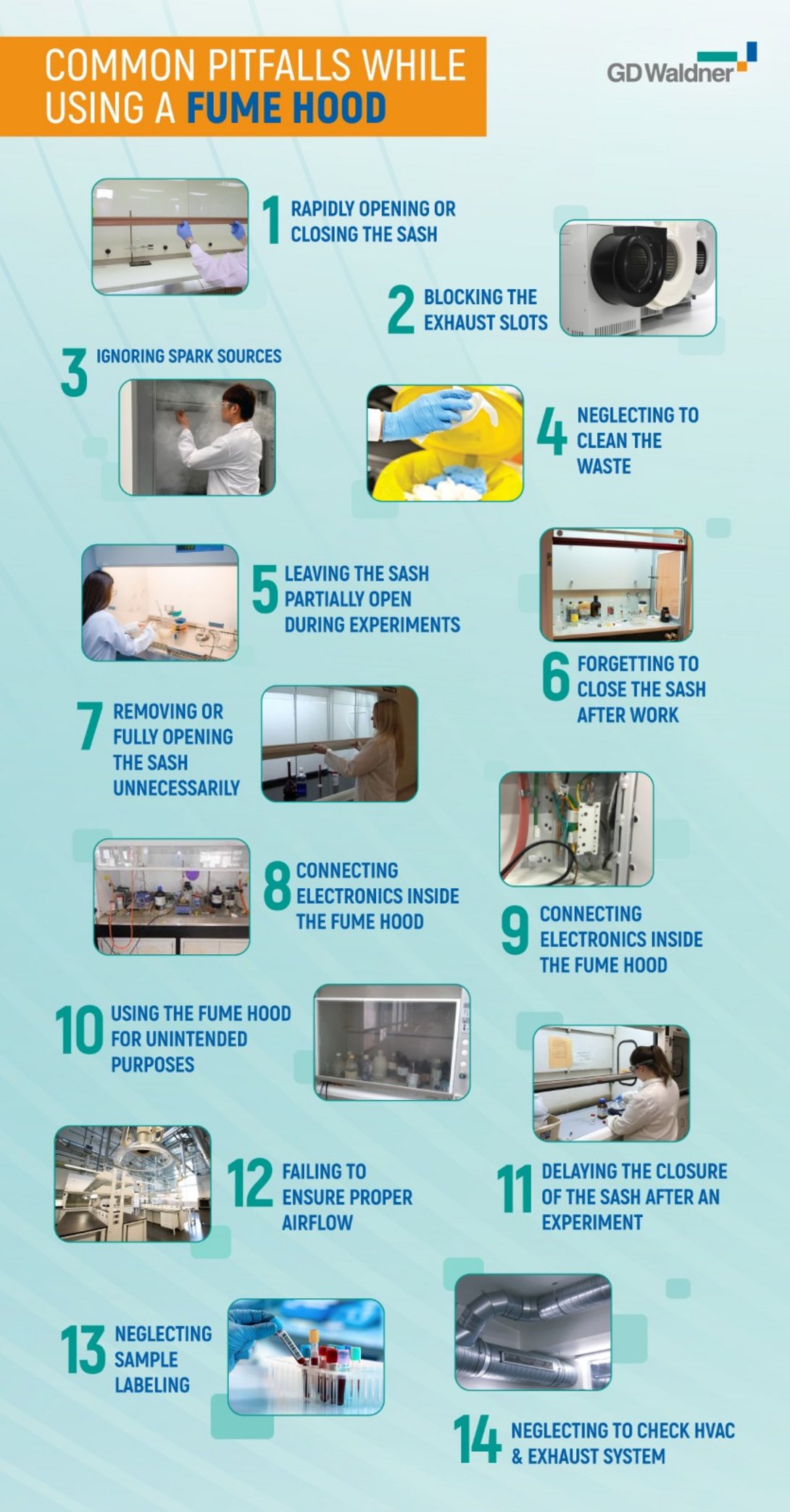Arguably, the fume hood is one of the most commonly misunderstood safety tools in the laboratory. While fume hoods are highly effective in ensuring safety, it's important to note that their effectiveness relies on adhering to proper laboratory safety protocols, regardless of their design quality. Neglecting proper procedures when using a fume hood can have severe consequences for both the individual user and those in their vicinity.
- Rapidly opening or closing the sash: One common mistake is opening or closing the fume hood sash too quickly. This can disrupt the airflow within the hood and compromise its effectiveness. It's important to open and close the sash slowly and avoid any sudden movements that could disturb the airflow.
- Blocking the exhaust slots: The exhaust slots at the back of the fume hood must remain clear to ensure proper ventilation. Blocking these slots with equipment, materials, or personal belongings can obstruct the airflow and compromise the containment of hazardous substances.
- Ignoring spark sources: When working with flammable liquids or gases, it is crucial to remove any spark sources from the fume hood. Ignoring this precaution can lead to the ignition of flammable substances, posing a significant safety risk.
- Neglecting to clean the waste: Failure to clean the waste materials from the fume hood can result in the accumulation of hazardous substances. Proper waste management is essential to maintain a safe and clean working environment.
- Leaving the sash partially open during experiments: If a "no hands" portion of an experiment is being conducted inside the fume hood, it is important to close the sash completely. Leaving it partially open can compromise the containment of hazardous fumes or vapors.
- Forgetting to close the sash after work: After finishing an experiment or leaving the fume hood, it is crucial to close the sash completely. Leaving it open can lead to the escape of hazardous substances into the laboratory, posing a risk to the researcher and others.
- Removing or fully opening the sash unnecessarily: The fume hood sash should not be removed or left completely open without a specific reason. These actions can disrupt the proper airflow and compromise the containment of hazardous materials.
- Connecting electronics inside the fume hood: All electronics should be connected outside of the fume hood. Introducing electrical equipment into the hood increases the risk of sparks or short circuits, which can lead to fires or other safety hazards.
- Using the fume hood for unintended purposes: Fume hoods are designed for specific functions, such as containing and ventilating hazardous substances. Using the hood for other purposes, such as storage or non-hazardous tasks, can compromise its effectiveness and pose safety risks.
- Delaying the closure of the sash after an experiment: It is important to close the fume hood sash immediately after completing an experiment. Delaying the closure can result in the escape of hazardous fumes or vapors, endangering the researcher and laboratory occupants.
- Failing to ensure proper airflow: Regularly checking and confirming that the fume hood is drawing air properly is essential. If the airflow is compromised, it can diminish the hood's effectiveness in containing and venting hazardous substances.
- Neglecting sample labeling: Properly labeling samples placed inside the fume hood is crucial for safety and organization. Failure to label samples correctly can lead to confusion, misidentification, or mishandling of hazardous substances, potentially resulting in accidents or contamination.
- Neglecting to check HVAC & Exhaust System: Neglecting to check HVAC and exhaust systems can lead to compromised airflow within the fume hood, reducing its effectiveness in containing hazardous substances and increasing the risk of exposure.
Common mistakes in fume hood usage pose a significant risk to personal safety and overall laboratory safety. To ensure a safe working environment, it is crucial to understand and avoid these errors. And when it comes to fume hoods, GD Waldner has the expertise and solutions you need to promote safe and efficient laboratory practices.

